Lacunae
This is a brief follow up of my papers which explored the phenomenon of a covert narcissist priest. There I argued that a narcissist priest (who during the Mass is supposed to be an icon of Jesus Christ), in the reality the antipode of Christ, subverts and eventually erases the presence of Christ in the minds of his congregation and swaps it with his own, overbearing and entirely self-centered, presence [‘The Antipriest’, ‘The heart of the New Testament’].
The only remaining “intact” form of the presence of Christ in the church now is the Real Presence, in the Eucharistic species, the Body and Blood of Christ [‘Vectors of the soul’].
I also argued that the mechanics of abuse in a narcissistic church (the ecclesial gathering which enables narcissistic abuse by the clergy and those close to them) are identical with abuse done by a narcissistic mother, now being “upgraded” from the temporal realm to the realm of the absolute (God’s church) – hence the deadly impact of abuse in the church for those who already were abused in childhood [‘The loop: a formula of the spiritual abuse in the true i.e. with valid sacraments, Church’]. I concluded that it was Jesus Christ in the Holy Communion, His objective Real Presence (something that the believer cannot obtain outside of the Church) that keeps the believer being imprisoned in the narcissistic church. Christ thus seems to play the role of bait or even an enabler of the abuse, and this impossible image, of Life and Love used by Evil and Death, crushes the believer’s mind.
Some things are better grasped via a picture than via a logical argument. A believer knows perfectly well that Jesus Christ the Redeemer and Liberator cannot be used by evil or collaborate with it and yet he feels it when he is presented with the sight of the abuser distributing that very Christ. What he sees and experiences now in the narcissistic church overwrites what he knows.
I tried, via making visual representations of the situation, to grasp the role of Our Lord in the narcissistic church and to solve the impossible dilemma of a believer “staying with Christ and having no life” or “leaving Christ and having a life”.
* * *
A typical human society consists of individuals with [relatively] normal psyche – i.e. capable of empathy and genuine engagement with the others (red squares). Any society always has some individuals with pathologies who for some reason are unable to empathize or to relate to others in a genuine way (black squares). Obviously, the more devoid of empathy/pathological individuals that are present, the less healthy is the society.
Pic 1. The earthly ministry of Jesus Christ
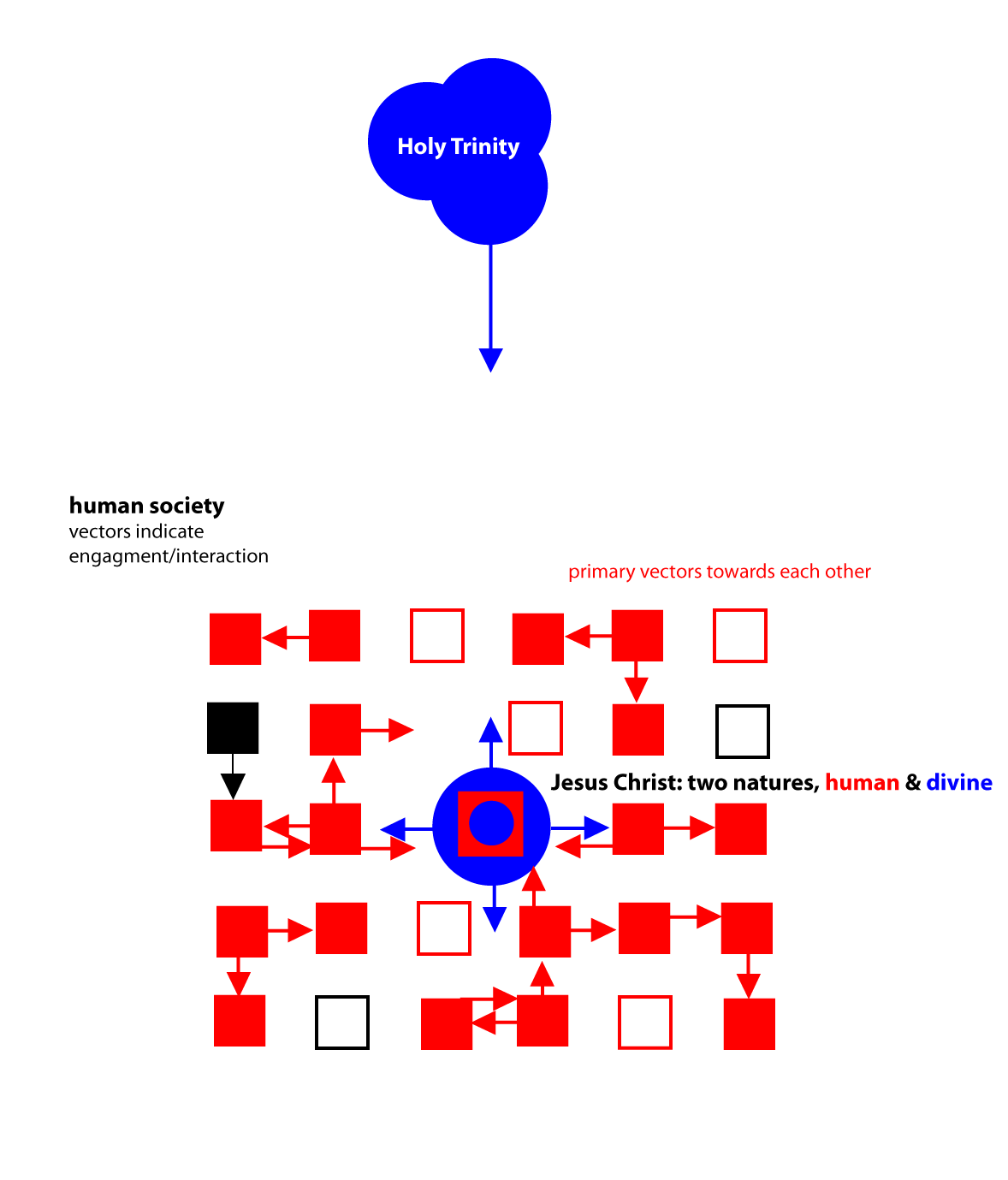
The above is what Jesus Christ had to deal with while walking in Galilee and preaching. His words and He Himself could be accepted or rejected by the others but he was never ignored, “not seen” or “walled off by silence” (this is something that happened to Him much later, close to Golgotha).
The Humanity of Christ here (represented by the red square) corresponds to the humanity of the people; His Divinity is being expressed = made accessible = visible via His Humanity.
Pic 2. After Ascension
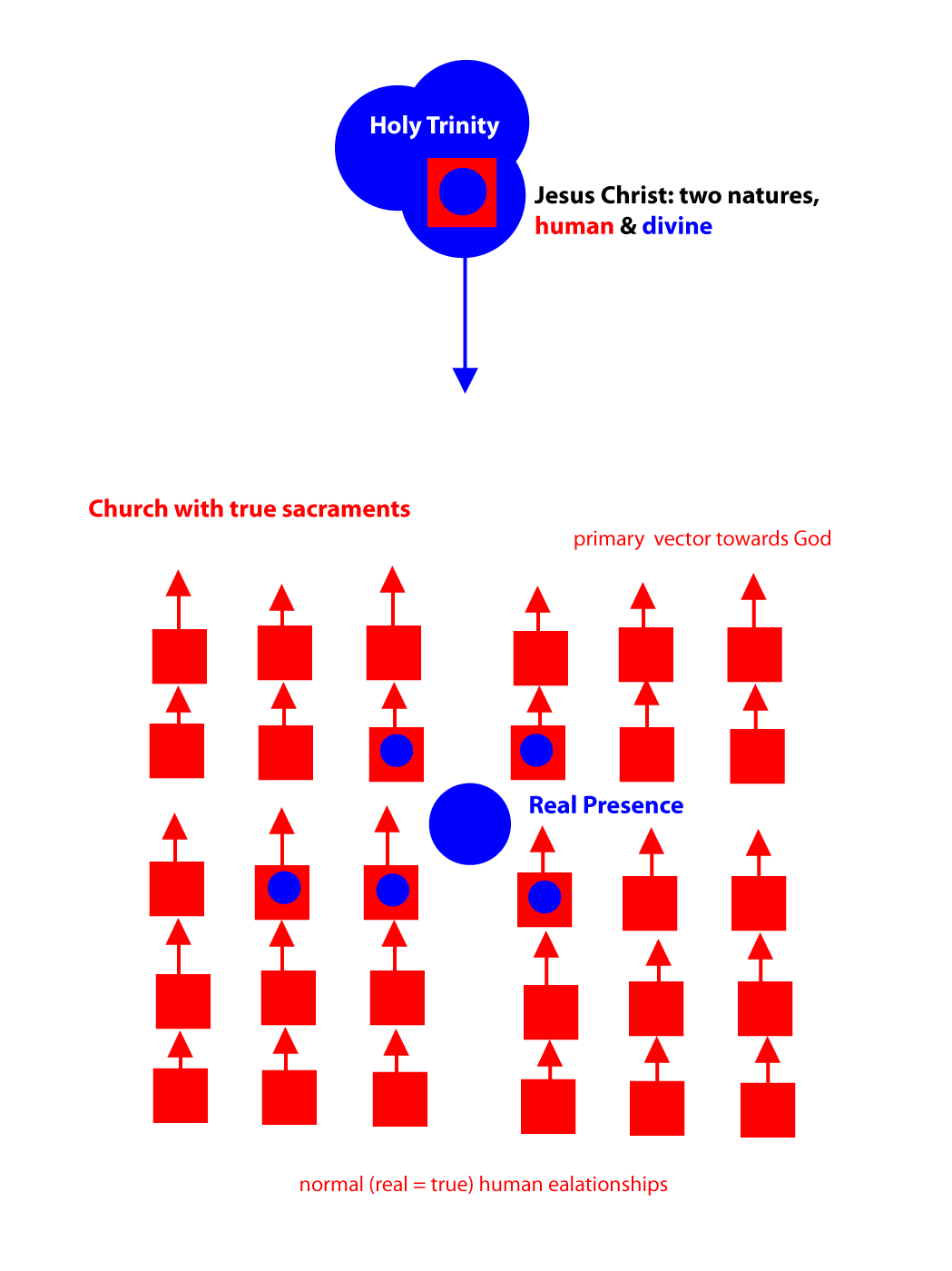
Those who responded to Christ and believed in Him would follow Him and eventually form the Church, His Body.
This is the Church with the Real Presence of Christ in Holy Communion. Notice how Divinity and Humanity of Jesus Christ [represented above the church, He is in eternity with the Father and the Holy Spirit = the Holy Trinity] finds its perfect reflection in the sacrament of the Eucharist. The receiving believers literally “incarnate” Christ, their bodies become His and vice versa.
The “all-red” squares, here representing those individuals with a normal psyche, do not imply that there are no individuals with psychopathology in the generally healthy church – there are, just like in any human society. However, 1) the genuine orientation towards Christ of the majority of those gathered and 2) the accepted healthy (none-abusive) pattern of interpersonal relationships between them ensure that pathology cannot spread and overtake the church. Eventually everyone who makes a choice to follow Christ, with psychopathology or without, is to be transformed by Christ into a new person.
NB: This literal incarnation of Christ, in each believer and the Church as a whole is missing in those churches which do not believe that the Eucharist is the real Body and Blood of Jesus Christ. They are His Body in Spirit only [below].
Pic 3. A church which believes that the Eucharist is only a “symbol”
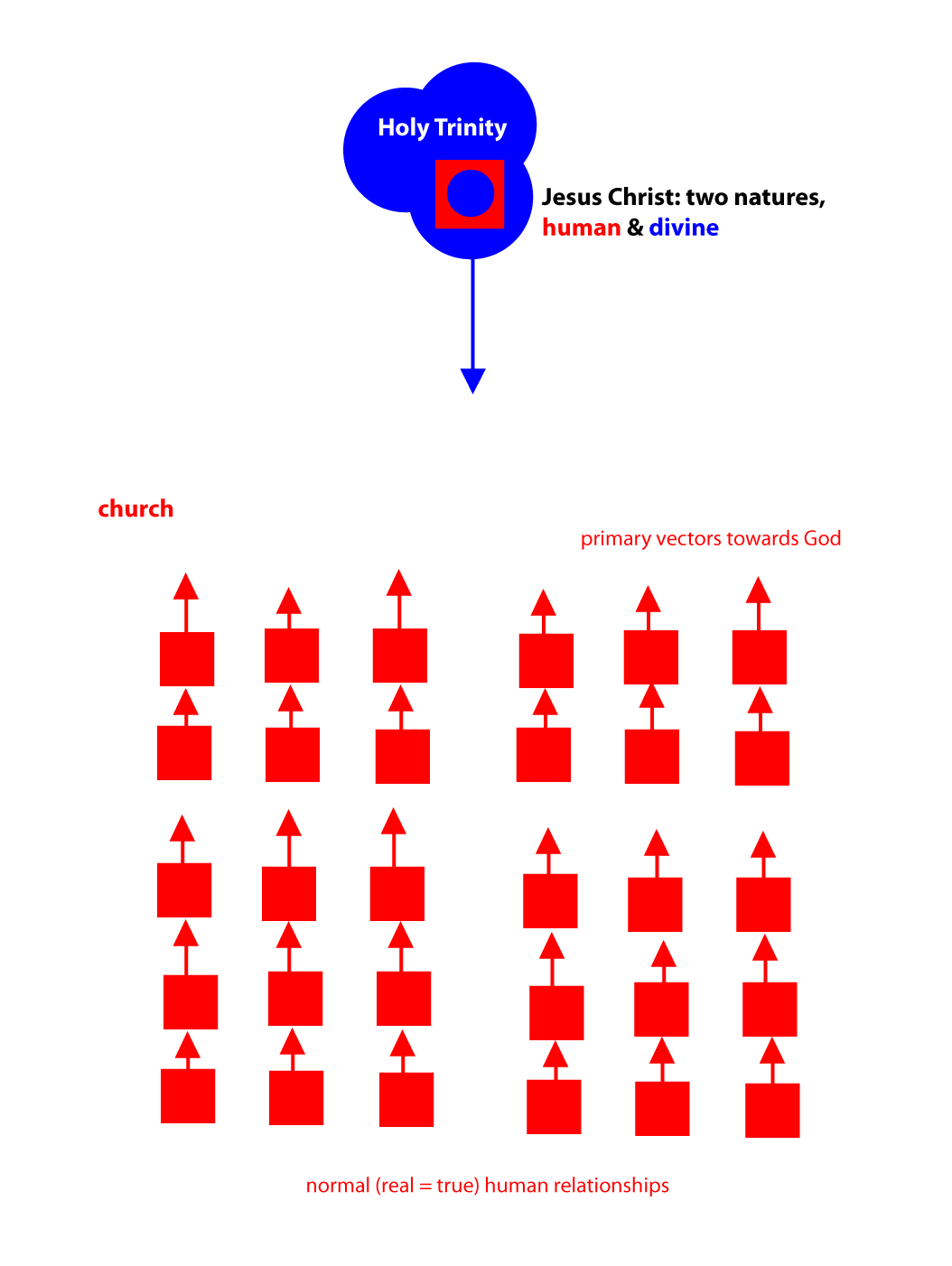
Hence, the Churches which believe the Eucharist is the real Body and Blood of Christ are the literal repetition of the Last Supper.
Pic 4. Eucharist, then (Last Supper) and now (Church with true sacraments)

The intended by God development of His Church is theosis (deification) of all creation. Notice how the believers, while trying to come closer to Christ, inevitably come closer to each other. Their primary focus, on Jesus Christ, Who is above any private focus or disagreements, binds them together despite their differences (without crushing them). Notice the perfect and happy reflection of Christ in all. Pic. 5 conveys the joy of the Resurrection, of Christ and of each individual resurrected in Christ. The Cross turns into the Tree of Life.
Pic 5. Resurrection of Christ and theosis
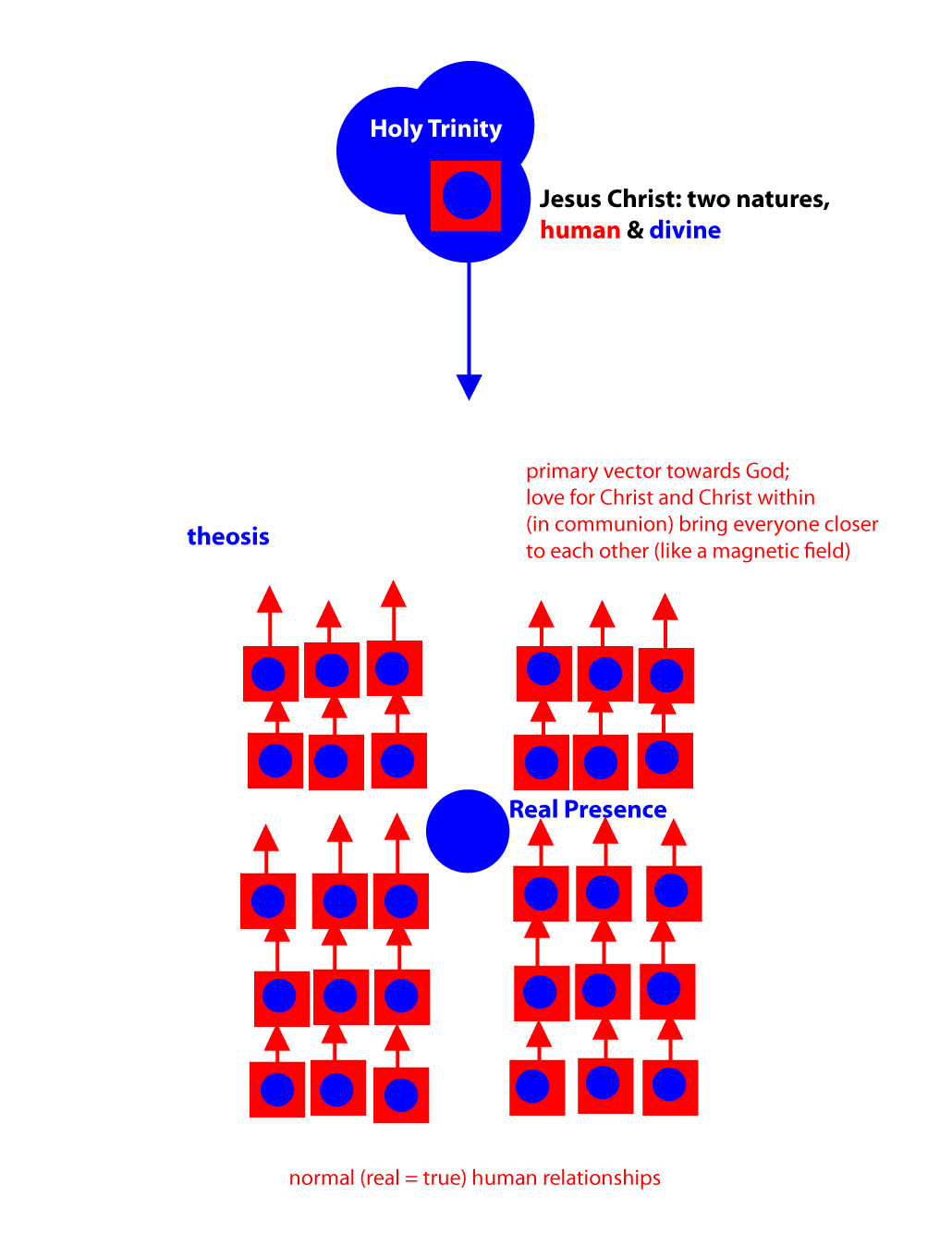
There is however another possibility for the “development” of the church which depends purely on the human factor, namely the accepted (fallen) mode of interpersonal relationships within it.
Pic 6. Narcissistic abuse in the Church: formation of “the system”
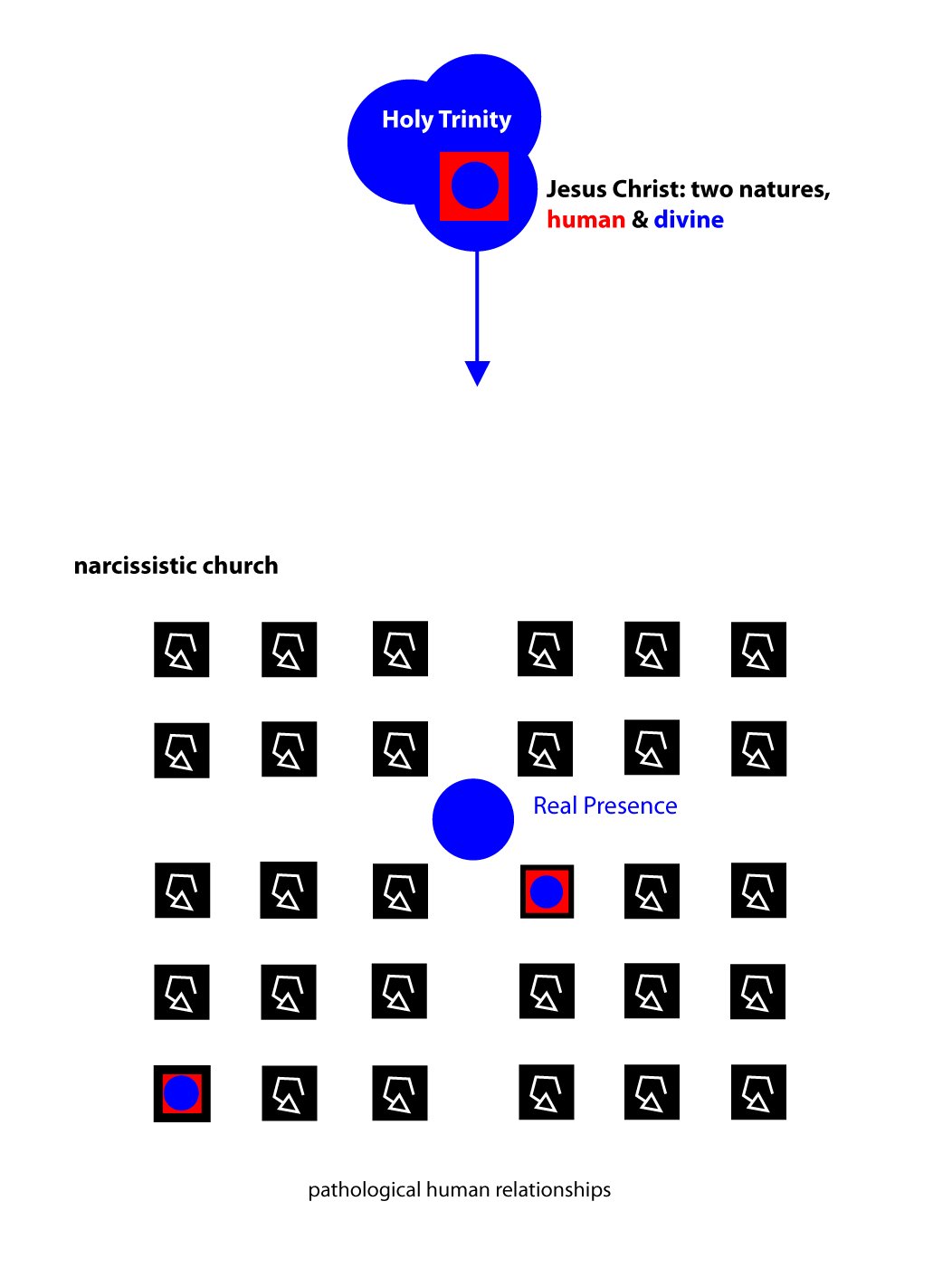
Christ is truly present here, in the midst of severe interpersonal abuse. The abuse, acted out by those who hold unquestionable power (narcissistic clergy and those close to them) and enabled by the passivity of the rest of the church’s members, kills the vectors of love and empathy directed towards God (and caused by Him) and creates vectors of fear directed inwards (within black, entirely stationary squares). The abused human psyche is now unable to truly relate to Christ (and to each other, in Truth). The humanity of the abused fearful person is now cut off from His Humanity. The world of believers is growing black, frozen and fragmented.
The next stage: well-established habitual abuse eventually wipes off in the believers any capacity of resistance, even if only within themselves, and teaches them to maintain habitual silence no matter what happens to them or to others. They are numb and practically non-existent as persons. They still continue participating in the Eucharist though.
Pic 7. Silencing and giving up personhood
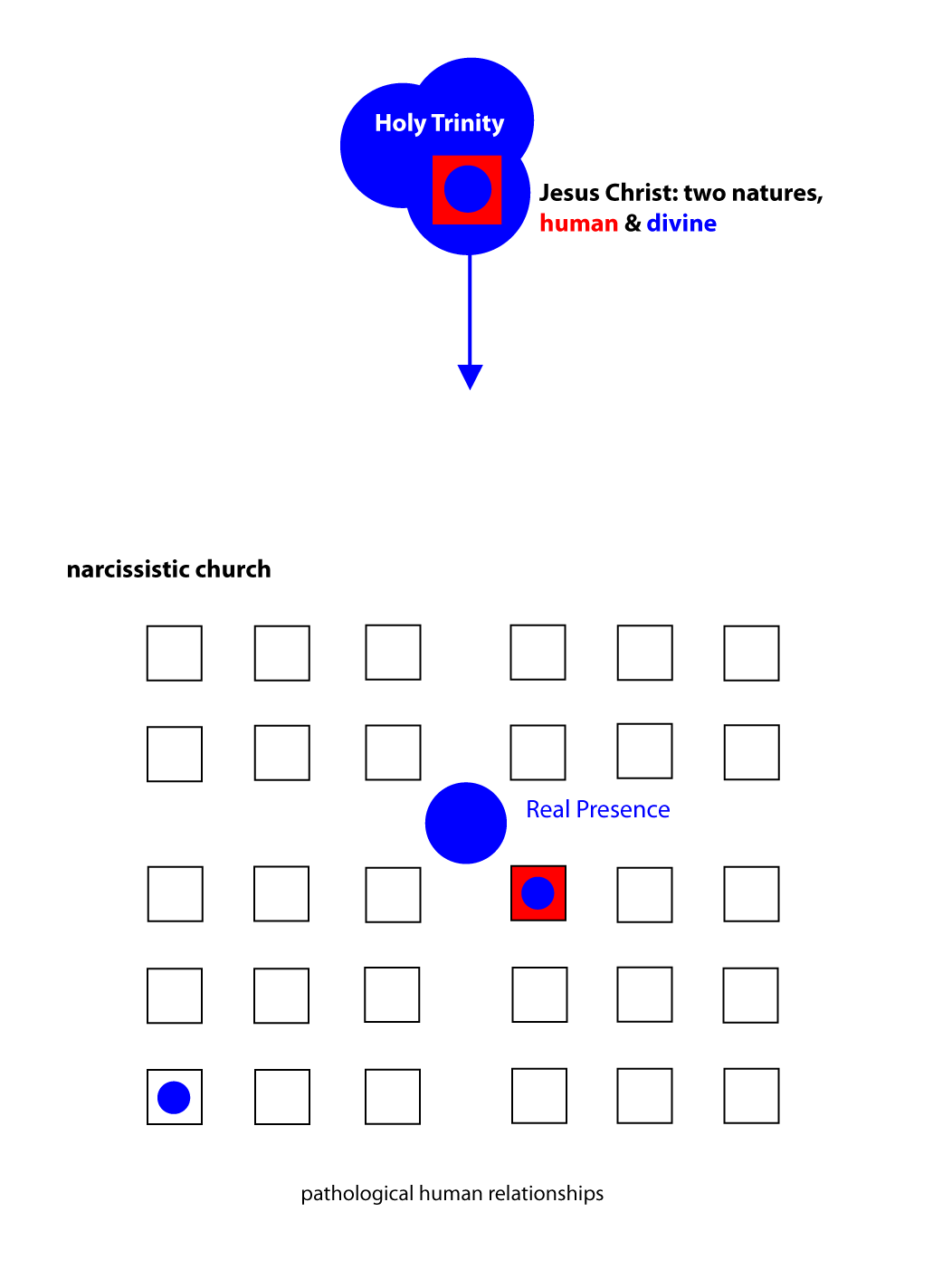
Abuse creates the expanding system of lacunae, in the soul of each believer and in the congregation as a whole. Nothing of substance can survive in those lacunae for long.
With time the eroded believers become less real than the system of pathological interpersonal relationships which was imposed upon them. They are now reminiscent of the shadows of human beings left by the explosion at Hiroshima. The system, formed by their imprints, does not now need them or anyone else to support itself.
Pic. 8: Golgotha: then and now
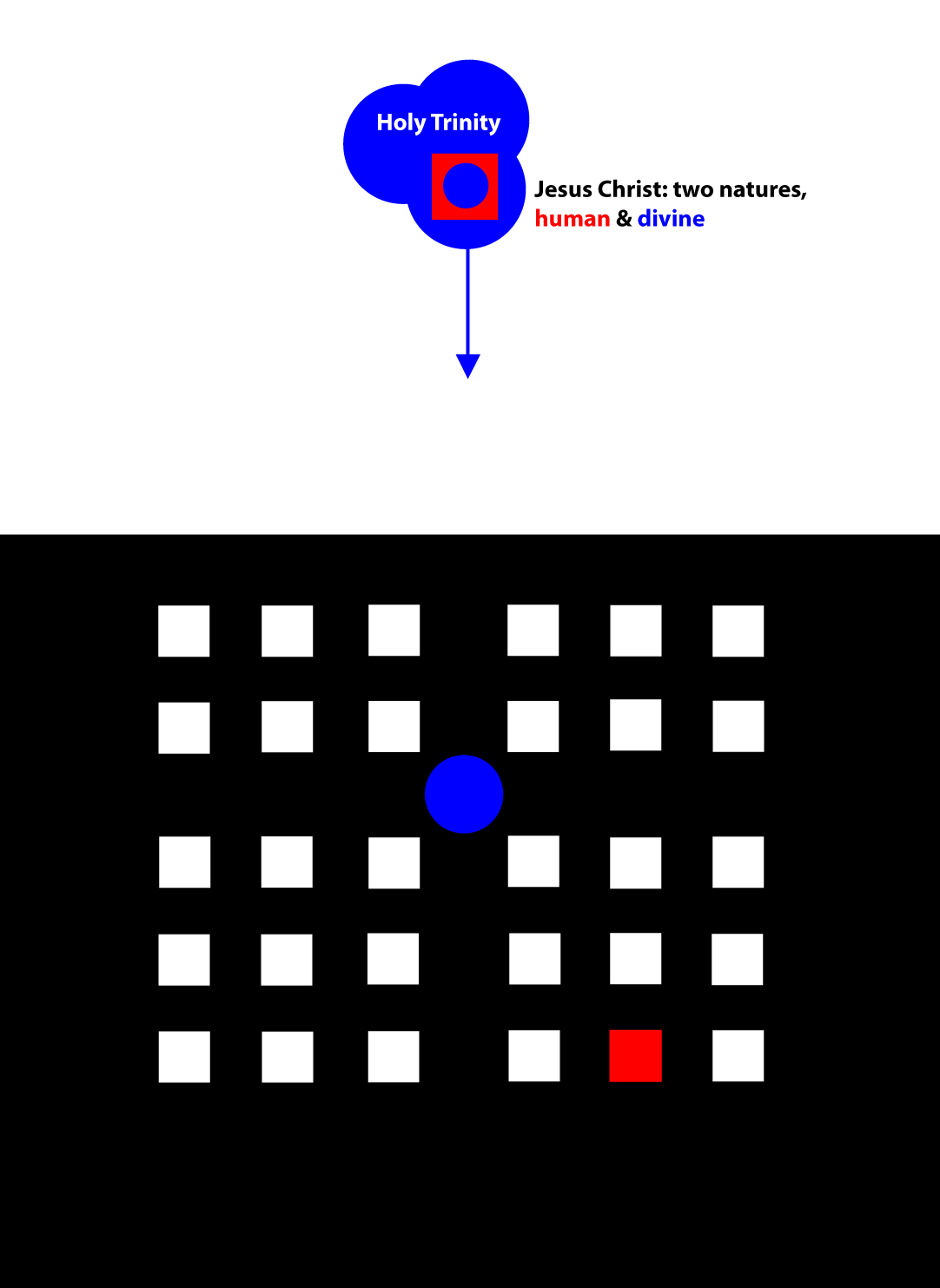
Pic. 9: Christ in prison, then and now
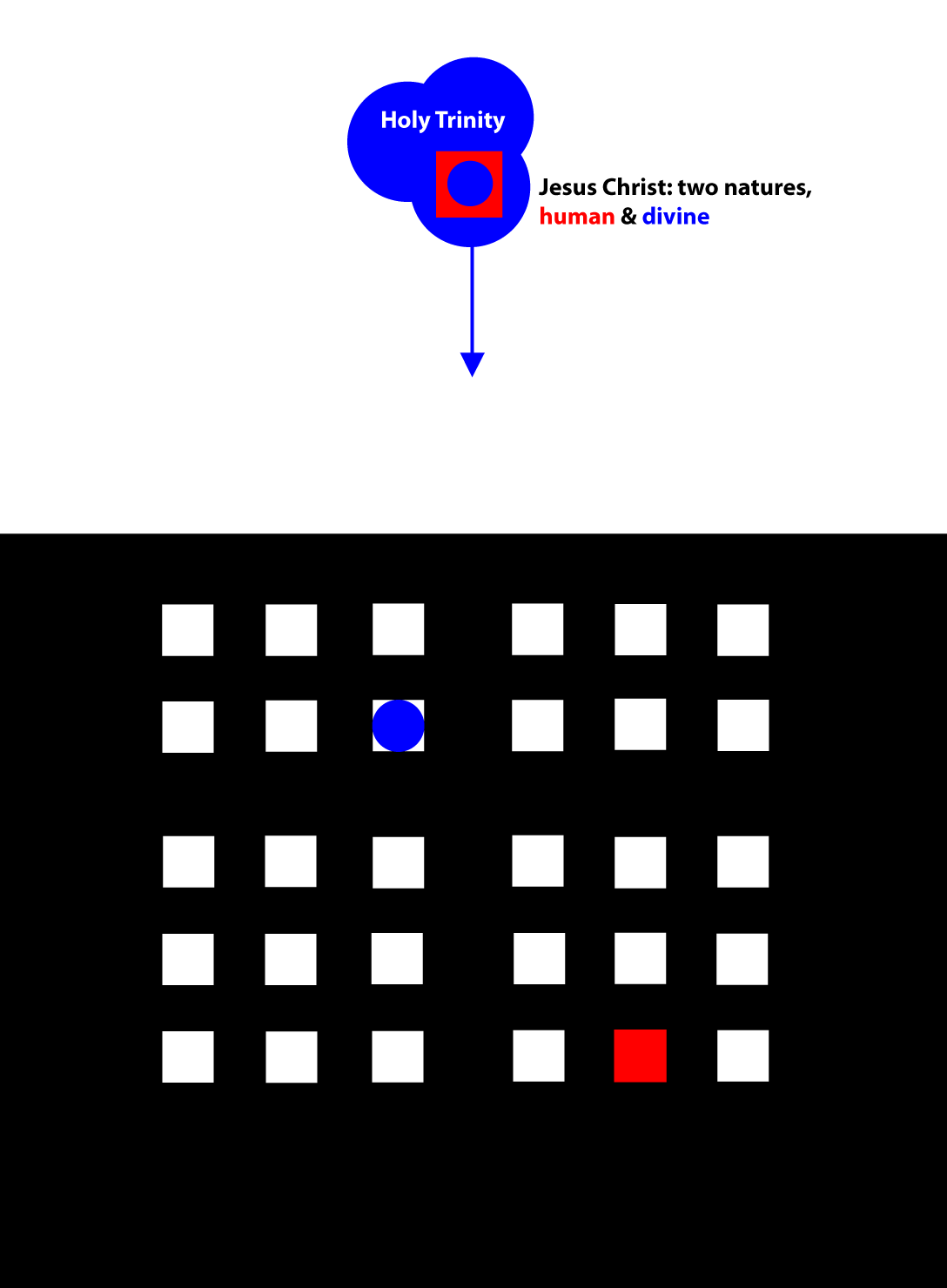
PS
A paradox: all this – a perverse shadowy reenactment of the Passion and Crucifixion of Christ – could never be possible in the church where there is no real Passion and Crucifixion of Christ (in the Mass); it is only possible for this to happen where He truly is.
The noun lacuna means an empty space, a hole where something should be. It is used to talk about missing parts of a book or manuscript, either because lost pages have created a lacuna, or because censors have blacked out or removed parts of them. In the study of anatomy, a lacuna is a hollowed-out place or cavity within a bone. In Latin, lacuna means "pit or hole," and its plural is lacunae (from Vocabulary.com )